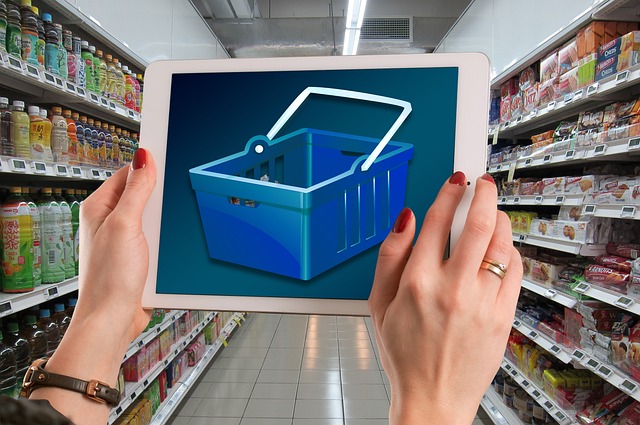Understanding Email Marketing Automation
Email marketing automation stands at the intersection of technology and marketing strategy. This powerful tool streamlines communication, letting businesses engage with customers consistently and effectively. By automating repetitive tasks, businesses offer personalized experiences. This automation saves time, eliminates manual effort, and provides a chance to create detailed marketing campaigns. Now, picture how this can translate into boosting e-commerce sales. Email marketing automation allows online businesses to interact with potential customers without the constant need for manual work. Each email sent has the potential for a conversion, and tailored messages resonate better with recipients.
Imagine a well-timed email that reaches the right audience at the perfect moment. For e-commerce businesses, this becomes crucial when customers consider making a purchase. It’s not just about sending a generic newsletter; it’s about leveraging data to craft unique messages. That’s the magic of email marketing automation. Additionally, an automated email sequence can guide customers through their shopping journey. A welcome email could grace a new subscriber’s inbox within moments of signing up, while abandoned cart emails nudging those who almost converted can be sent automatically. Each interaction builds a relationship, fostering trust and encouraging repeat purchases.
The Importance of Personalization in E-Commerce Email Marketing
The world of online marketing is intensely competitive. Therefore, personalization emerges as a top strategy for brands looking to boost sales. Today’s consumers crave experiences tailored to their preferences. According to studies, personalized emails yield higher open and click-through rates than their non-personalized counterparts. Imagine a customer named Sarah who buys yoga mats from an e-commerce store. When she receives an email suggesting related products like yoga blocks or workout gear, it immediately creates relevance. This targeted approach nurtures the relationship and increases Sarah’s likelihood of purchasing.
Automation facilitates personalization in various ways. Brands analyze customer browsing behaviors and purchase histories, employing this data to determine what products to recommend. By segmenting email lists, they ensure that individuals receive content relevant to their specific interests. For instance, sending a seasonal guide on fitness apparel to the fitness enthusiasts, while also dispatching promotional content about the latest yoga classes to those who have shown interest in yoga products, exemplifies this. Personalized subject lines and content don’t just make emails feel relevant. They enhance feelings of belonging, encouraging customers to engage more deeply with the brand.
Creating Segmented Email Lists
Segmentation represents a crucial strategy in email marketing automation. Dividing your email list into specific groups based on customer behavior, preferences, or demographics allows for more tailored marketing efforts. Think of it as treating your audience as individuals rather than a mass group. You can segment customers by their purchase history, the amount spent, the frequency of purchases, and even browsing habits. For instance, first-time buyers might benefit from a warm welcome series, while loyal customers could receive exclusive perks and rewards. This strategy increases engagement rates significantly.
Moreover, segmentation doesn’t stop at just categorizing customers into broad groups. Brands can go even deeper, creating hyper-targeted lists for specific campaigns. For example, a customer who frequently browses winter apparel can be placed on a list dedicated to winter sales. An automated workflow could send timely promotional emails as the season changes. This can lead to a significantly higher open rate, capturing customers right when they’re interested. Remember, the key here lies in understanding your customers’ behaviors and preferences. Continuous assessment and refinement of your segments can mean the difference between a random email blast and a well-crafted, engaging message that resonates with your audience.
Designing Effective Automated Email Campaigns
When it comes to effective email marketing automation, careful planning and insightful design are essential. The journey begins by determining the goals of your campaign. Are you aiming to welcome new subscribers, promote a seasonal sale, or encourage repeat purchases? Each objective requires you to construct a distinct email sequence that aligns with specific customer journeys. Think of your emails as stepping stones guiding customers through their experiences with your brand. Next, let’s tackle design because the presentation of your emails can significantly influence performance. Choose clean, responsive templates that reflect your brand’s identity. An aesthetically pleasing email encourages recipients to engage with your content.
Your email’s content should also reflect a balance between informative and promotional material. The goal isn’t only to sell; it’s to cultivate relationships with your audience. Consider including valuable information such as tips, tutorials, or product usage ideas within your mailings. That way, readers see you as a trusted source rather than just a seller. Call-to-action (CTA) buttons should pop and inspire immediate action, whether it’s to shop now or to check out an exclusive offer. Each automated email should maintain a harmonious blend of compelling design, persuasive copy, and clear objectives, creating a seamless journey for the recipient.
The Role of A/B Testing in Optimization
In the dynamic world of online marketing, what works today may not work tomorrow. This is where A/B testing stands out as a key player in optimizing email marketing automation. A/B testing involves sending two variations of the same email – with one small change between them – to different segments of your audience. It could be a different subject line, various content layouts, or even contrasting CTAs. By analyzing the performance of each version, you can make informed decisions about which elements resonate more with your audience. This process fosters a culture of constant improvement, enabling you to refine your email strategy continually.
For e-commerce businesses, even small tweaks can yield significant results when it comes to conversions. Testing subject lines can dramatically influence open rates. For instance, a subject line invoking urgency, such as “Last Chance for 50% Off!” can often outperform a generic “Our Sale is Now On.” Furthermore, consider testing the timing of your emails; when do your customers interact most? Finding the best day and time can unveil new engagement patterns. Remember, the ultimate goal of A/B testing is to learn and adapt, making data-driven decisions that propel your email campaigns to new heights.
Integrating Email Marketing with Other Channels
Email marketing should never stand alone; it harmonizes beautifully with other marketing channels, acting as a component of a broader strategy. Social media, for instance, can serve as an engaging tool to attract subscribers to your email list. Sharing snippets of upcoming email content or exclusive offers on social media can spark interest. This synergy strengthens your overall marketing efforts, creating a cohesive brand experience. Imagine a situation where a loyal Instagram follower sees a promotion and is encouraged to subscribe to your email newsletter for more exclusive deals.
Similarly, integrating email marketing with your website enhances user experience. Capturing email addresses through sign-up forms at crucial touchpoints, such as checkout, rewards sign-ups, or even through gated content, creates opportunities for ongoing engagement. Automation tools can ensure that every sign-up is welcomed with timely, relevant content. Additionally, utilizing customer data captured through emails can support further personalization on additional platforms. This interconnectedness between channels nurtures a holistic customer journey and significantly enhances brand reliability.
Measuring Success: Key Metrics to Track
Tracking the success of your email marketing efforts is critical to understand their impact on e-commerce sales. Numerous metrics help you to evaluate how well your campaigns perform and highlight areas for improvement. One primary metric is the open rate, indicating how many recipients opened your emails. A low open rate may signal the need for more compelling subject lines or better targeting of segments. Similarly, the click-through rate (CTR) indicates how many recipients clicked on links within your emails, revealing engagement levels. Low CTR might suggest the need for more enticing offers or clearer calls to action.
Another essential metric to consider is the conversion rate, representing the percentage of recipients who completed a desired action after clicking on a link in the email. This metric directly links to your sales goals and tells you how effective your emails are at driving purchases. Additionally, tracking metrics such as bounce rates and unsubscribe rates provides insights into list quality and audience interest. High unsubscribe rates might indicate that your content isn’t resonating with your audience, necessitating a reevaluation of your content strategy. Overall, regularly analyzing these key metrics equips you with valuable insights, guiding your email marketing automation journey to continually enhance e-commerce sales.
Best Practices for Email Marketing Automation
As we wrap up this comprehensive exploration of email marketing automation, let’s discuss some best practices to keep in mind. First and foremost, prioritize your customer experience. Always ensure your emails provide value. Whether it’s useful information, great promotions, or exclusive offers, customers should feel appreciated. Consistency matters too; creating a predictable schedule enables subscribers to anticipate your emails, fostering routine interactions. Furthermore, maintain a keen eye on data privacy regulations. Ensuring adherence to laws like the GDPR and CAN-SPAM is not just necessary but builds trust with your subscribers.
Additionally, continuously optimize your email list by removing inactive subscribers. While it might seem beneficial to have a long list, engaging a smaller, more active audience proves more fruitful. Lastly, invest in honing your email copy and design, making them as appealing and clear as possible. The world of e-commerce thrives on visuals, and your emails should reflect the same lively presentations of your products. In executing these best practices, your email marketing automation can become a powerhouse promoting sustained engagement and remarkable e-commerce sales.
FAQs
- What is email marketing automation?
- Email marketing automation involves using software to send automated email campaigns to audiences based on pre-defined triggers and customer behaviors. This helps businesses nurture relationships and increase sales without manual effort.
- How can email marketing automation boost e-commerce sales?
- By automating personalized communications and targeted campaigns, businesses can improve engagement, re-engage potential customers, and build ongoing relationships, leading to increased conversion rates.
- What metrics should I track to measure email marketing performance?
- Key metrics include open rates, click-through rates, conversion rates, bounce rates, and unsubscribe rates. These indicators provide insights into the effectiveness of your email campaigns.
- Is personalization important in email marketing?
- Yes, personalization significantly enhances engagement and conversion rates. Customers feel more valued when they receive tailored content that resonates with their preferences.
- What are some best practices for email marketing automation?
- Some best practices include prioritizing customer experience, maintaining consistency in sending schedules, ensuring compliance with data privacy laws, and continuously optimizing your email list.



